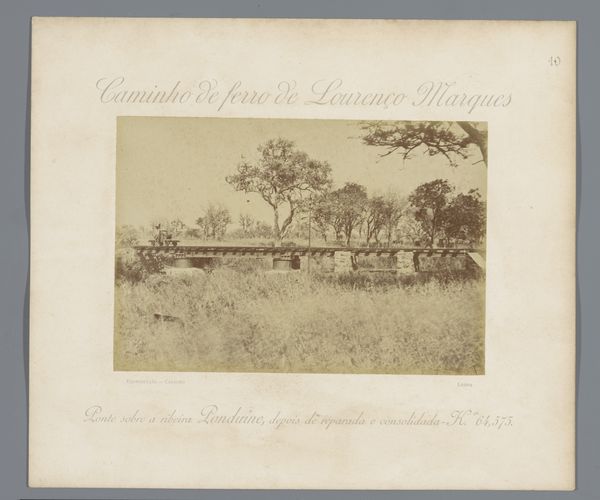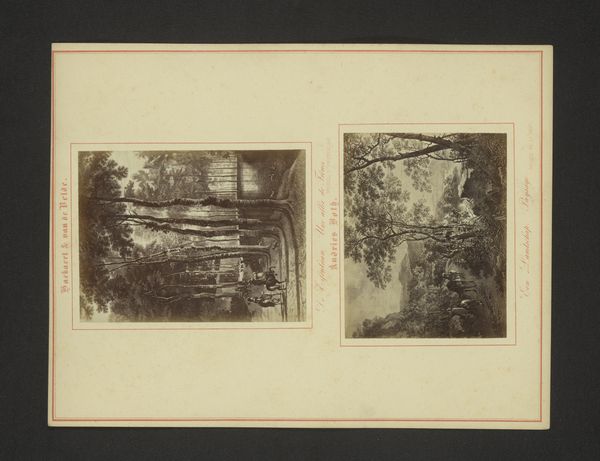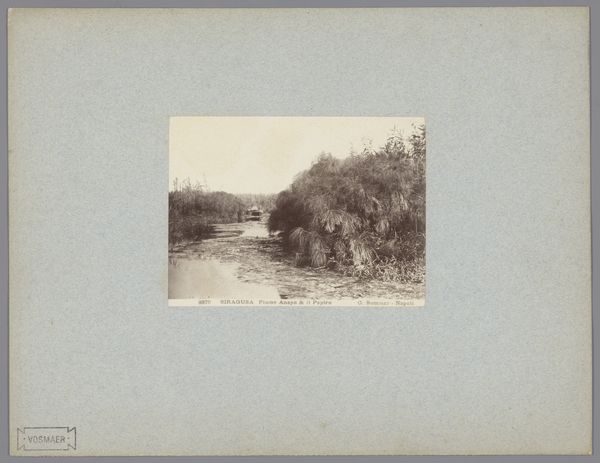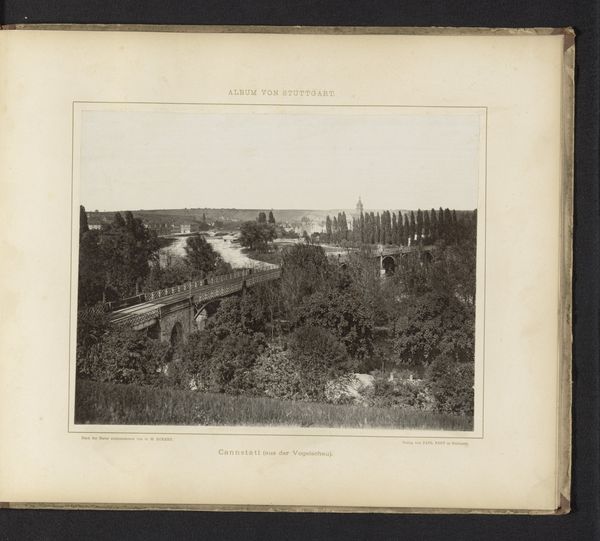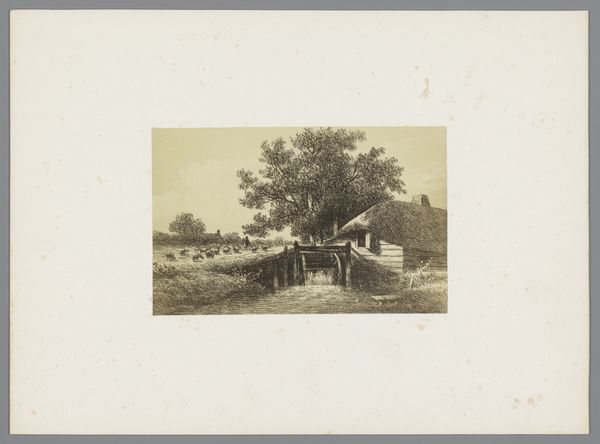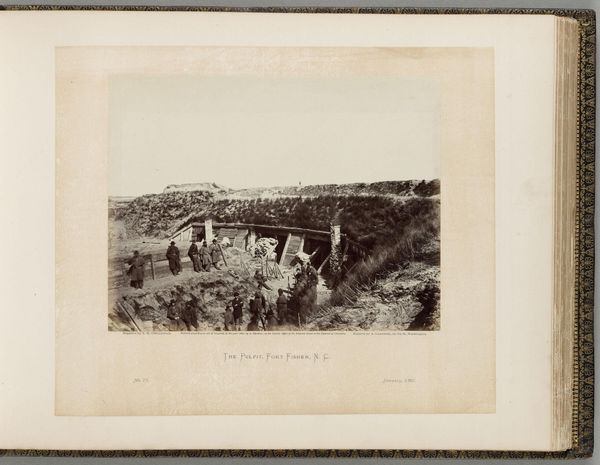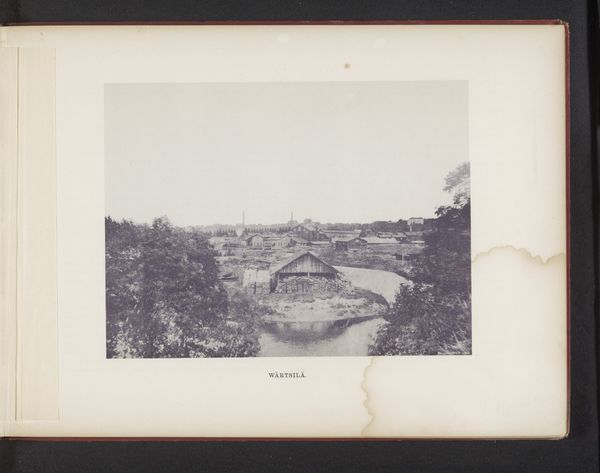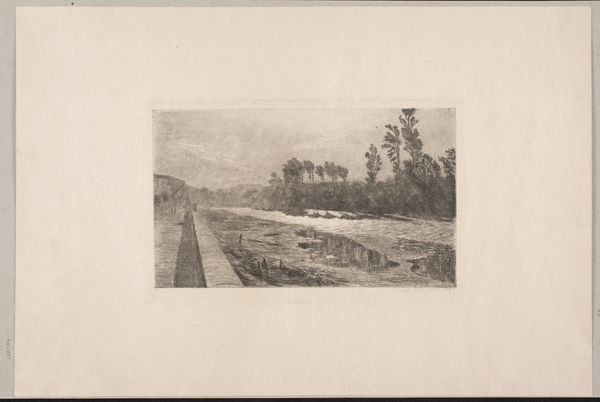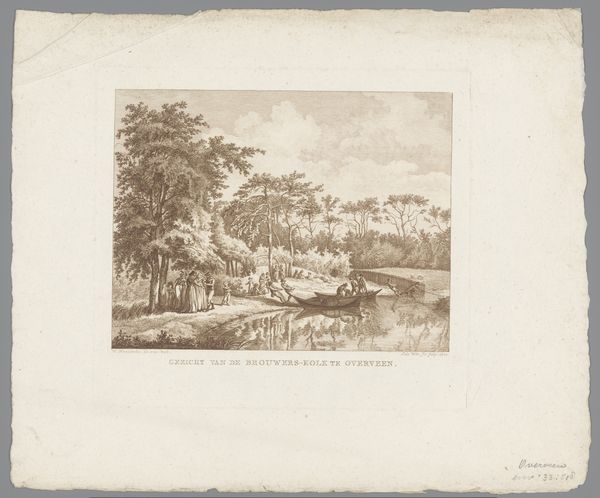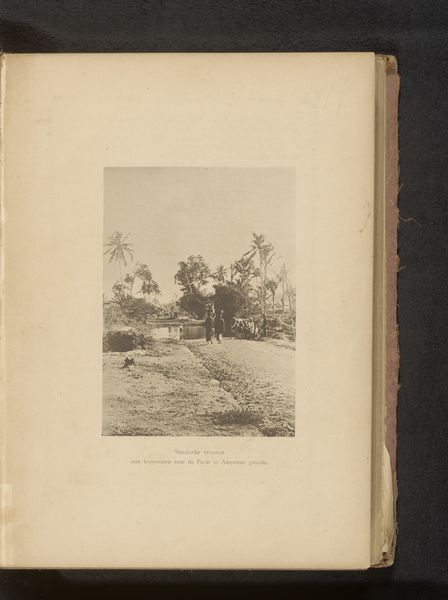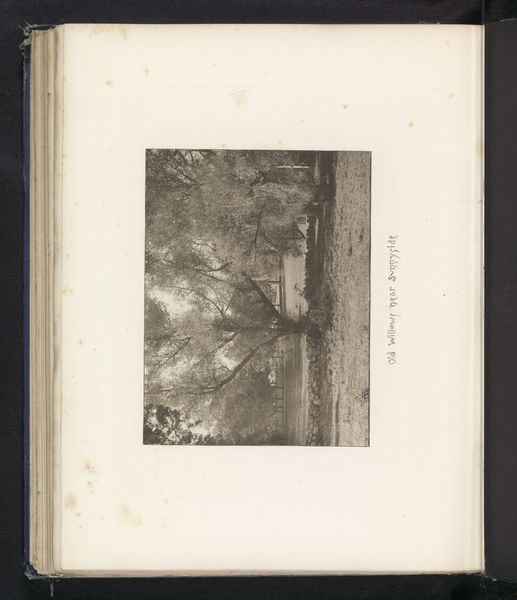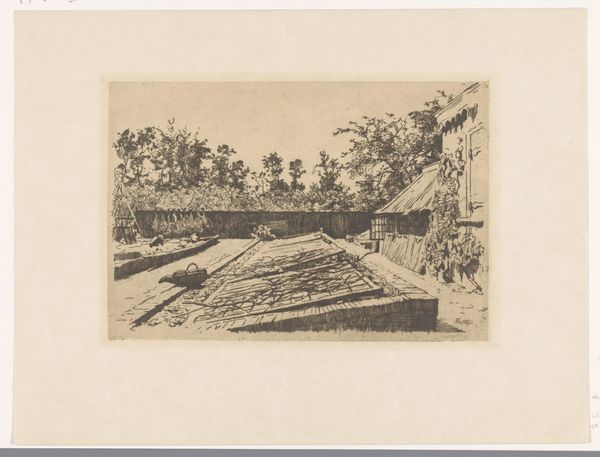
photography, albumen-print
#
landscape
#
photography
#
orientalism
#
albumen-print
Dimensions: height 110 mm, width 167 mm
Copyright: Rijks Museum: Open Domain
Curator: Here we have a striking image entitled "Spoorbrug in Mozambique," dating from around the 1880s. The photograph, an albumen print, is attributed to Manuel Romão Pereira. It depicts a railway bridge in what was then Portuguese East Africa. Editor: You know, the first thing that hits me is the quiet desolation. That pale, sepia tone casts everything in a light of faded dreams. It feels almost haunting, doesn’t it? Like a relic of an era long gone. Curator: Precisely! The albumen print process, very popular in the late 19th century, often gave photographs this very tonality. Given the context, that tone underscores the grand ambition and brutal realities of colonial expansion during that period. Note the orientalist bent here too. Editor: Brutal realities… Yes. I’m also drawn to that lone figure nestled amidst the rocks near the bridge's foundation. There’s something about his presence that feels… staged, perhaps? Like he was placed there to give scale and… to humanize the imposition of the railway on the landscape. Curator: I agree; that figure definitely anchors the scale of the work. Moreover, it symbolizes the colonial endeavor: asserting dominance over a landscape by building these massive infrastructural projects and "civilizing" through industrialization. Editor: It is kind of strange how nature looks like an obstacle more than the actual focus. The railway dominates so much, that the surrounding almost vanishes... It is almost like progress is consuming everything. Curator: I share your assessment. I also see it as less a record of a geographical location, and more of an assertion of colonial will. "Progress" for some came at great expense for others. Editor: Makes you think about what those rails would carry. And what was left behind. You start picturing more than a landscape—ghosts move across the bridge and fade into the landscape, I think. It tells such a clear story about colonial projects with its simple scenery! Curator: Indeed. It offers us a potent reflection on a complicated history, even in its stillness. A testament to how the built environment shapes not only the land, but collective memory.
Comments
No comments
Be the first to comment and join the conversation on the ultimate creative platform.

